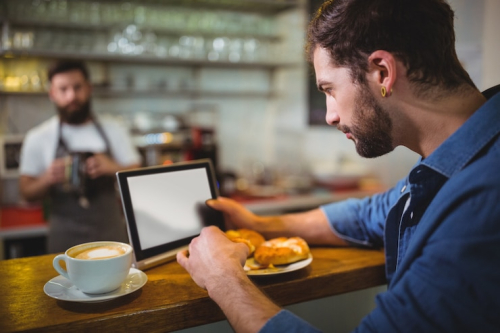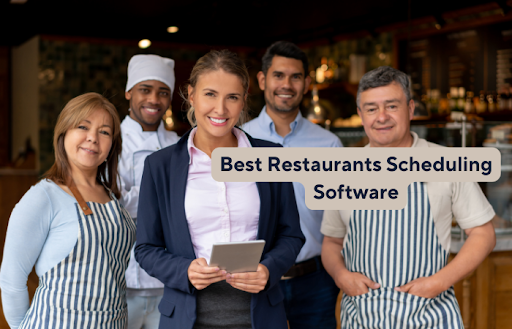Quick Listen:
Managers often grapple with a jumble of disconnected tools to keep operations running smoothly. A point-of-sale system hums at the front counter, a scheduling app buzzes on a smartphone, and an inventory spreadsheet lingers on a back-office computer. Each tool addresses a specific need, but together they create a fragmented ecosystem that drains time and muddles critical insights. Enter the all-in-one restaurant management platform a sophisticated, unified solution that’s transforming how eateries function. By integrating cloud-based dashboards, real-time analytics, and AI-driven forecasting, these platforms are replacing disjointed tech stacks, delivering unmatched efficiency and clarity to an industry that demands precision.
The Case for Consolidation
The restaurant industry has long relied on a patchwork of software: POS systems for payments, scheduling apps for staff, and inventory trackers for stock. However, these siloed tools rarely communicate, forcing managers to spend hours reconciling data. A glitch in one system can skew inventory counts or payroll, leading to costly errors and missed opportunities. All-in-one platforms, such as those from 7shifts or Toast, address this by consolidating front-of-house tasks like reservations and payments with back-of-house functions, such as inventory management and analytics, into a single, real-time dashboard. This integration allows operators to focus on what truly matters: delivering exceptional dining experiences.
The market for these solutions is booming. According to Straits Research, the total addressable market for restaurant management software was valued at $4.20 billion in 2022 and is projected to soar to $15.85 billion by 2031, with a compound annual growth rate (CAGR) of 15.9%. This growth reflects a surge in demand for cloud-based, mobile-first platforms that streamline operations from order processing to employee scheduling. Unlike traditional POS systems focused solely on payments, modern platforms offer comprehensive solutions that adapt to the complexities of today’s restaurant landscape.
Driving Forces Behind the Shift
Several factors are propelling the adoption of all-in-one platforms. The rise of digital ordering and third-party delivery services has reshaped restaurant operations. A 2025 report from Allied Market Research notes that the global restaurant management software market, valued at $4.2 billion in 2021, is expected to reach $17.1 billion by 2031, growing at a CAGR of 15.3%. The explosion of online food ordering and delivery has created a pressing need for robust software capable of managing these additional workflows seamlessly. Additionally, consumer demand for personalized dining experiences such as customizable menu options or healthier alternatives is pushing restaurants to leverage technology to stay competitive.
Cloud-based systems are at the heart of this transformation, enabling managers to monitor sales, adjust schedules, or track inventory from anywhere using a smartphone. The Verified Market Research report from 2025 emphasizes the role of AI and machine learning in the future of restaurant software. These technologies enable real-time analytics, allowing restaurants to forecast sales, optimize staffing, and reduce excess inventory. For example, AI-driven tools can predict busy periods, ensuring adequate staffing without over-scheduling, which directly impacts profitability.
Market Insight: The global restaurant management software market is projected to grow from $6.67 billion in 2025 to $28.03 billion by 2034, with a CAGR of 17.3%, driven by the need for efficient operations and enhanced customer experiences Polaris Market Research.
Real-World Impact: Success Stories
The benefits of all-in-one platforms are evident in real-world applications. A mid-sized restaurant group in Chicago, previously reliant on multiple separate tools, transitioned to a unified platform and saw transformative results. Managers once spent hours cross-referencing payroll with schedules and sales, often encountering errors that frustrated staff, particularly around tip reporting. After adopting an all-in-one system, the group streamlined scheduling and improved operational efficiency. The platform’s integrated CRM tools also enabled targeted promotions based on guest preferences, enhancing customer engagement.
Similarly, a fast-casual chain in California tackled food waste using a unified platform. By linking inventory tracking with sales forecasting, the chain optimized inventory management, aligning with findings from Verified Market Research, which highlights how integrated software optimizes workflows and minimizes human errors. These examples illustrate how all-in-one platforms deliver measurable improvements in efficiency and profitability.
Navigating the Challenges
Adopting an all-in-one platform isn’t without obstacles. The initial investment can be daunting, particularly for smaller restaurants. Costs associated with new hardware or breaking existing vendor contracts can strain budgets. Staff resistance is another hurdle servers accustomed to a familiar POS may resist a new interface, and kitchen teams might struggle with digital ordering systems like kitchen display systems (KDS). Data migration also poses risks, as transferring years of sales or inventory records can lead to glitches if not handled carefully.
Flexibility is another concern. Some restaurants fear vendor lock-in, where committing to a single platform limits future options. Others, particularly niche operations like fine dining or food trucks, worry that pre-packaged solutions lack the customization needed for their unique workflows. According to a 2025 Polaris Market Research report, while the market is set to grow significantly, customization remains a challenge for some adopters. However, as platforms evolve to offer more tailored features, these concerns are diminishing.
The Rewards: Efficiency and Enhanced Experiences
The advantages of all-in-one platforms are compelling. Operationally, they provide real-time data synchronization, allowing managers to monitor labor costs, sales, and inventory with a single glance no spreadsheets required. Financial transparency is another benefit, with unified dashboards tracking metrics like cost of goods sold (COGS) and tip distribution. Grand View Research projects the market to reach $14.70 million by 2030, driven by restaurant’s emphasis on data-driven decisions and IoT-based systems that enhance client-server interactions.
For guests, the impact is equally significant. Integrated CRM tools enable personalized experiences, such as recalling a regular’s favorite dish or offering a birthday discount. Built-in loyalty programs and marketing automation drive repeat business. Employees also benefit mobile scheduling apps allow staff to swap shifts or check pay stubs on the go, while centralized reporting simplifies compliance with labor laws. As one restaurant owner noted, “It’s like having a tireless co-manager who’s always on top of the numbers.”
The Future of Restaurant Technology
The restaurant tech landscape is advancing rapidly, with all-in-one platforms leading the charge. Industry experts anticipate more mergers and acquisitions as companies strive to deliver comprehensive solutions. A CTO at a leading restaurant tech firm remarked, “The future lies in seamless integration, not more standalone tools.” Emerging trends like AI-powered dynamic pricing, predictive scheduling, and voice-enabled ordering are poised to further enhance efficiency.
For restaurant operators, the takeaway is clear: embracing integrated systems is no longer optional it’s essential to stay competitive. The industry is evolving beyond great food to prioritize great data, exceptional experiences, and streamlined operations. As platforms like Toast and 7shifts continue to innovate, they’re not just replacing disconnected tools they’re redefining the art and science of running a restaurant. In an industry where every second counts, all-in-one platforms are the recipe for sustained success.
Disclaimer: The above helpful resources content contains personal opinions and experiences. The information provided is for general knowledge and does not constitute professional advice.
You may also be interested in: Best Toast POS Alternatives and Competitors
Scattered systems and manual processes erode your restaurant’s margins daily. Milagro unifies POS, digital menus, online ordering, staffing, loyalty, and AI-powered marketing into one platform, slashing costs and enhancing guest loyalty. Reclaim control over operations and drive revenue growth. Streamline your workflow and elevate profitability. Schedule your Milagro demo today!
Powered by flareAI.






